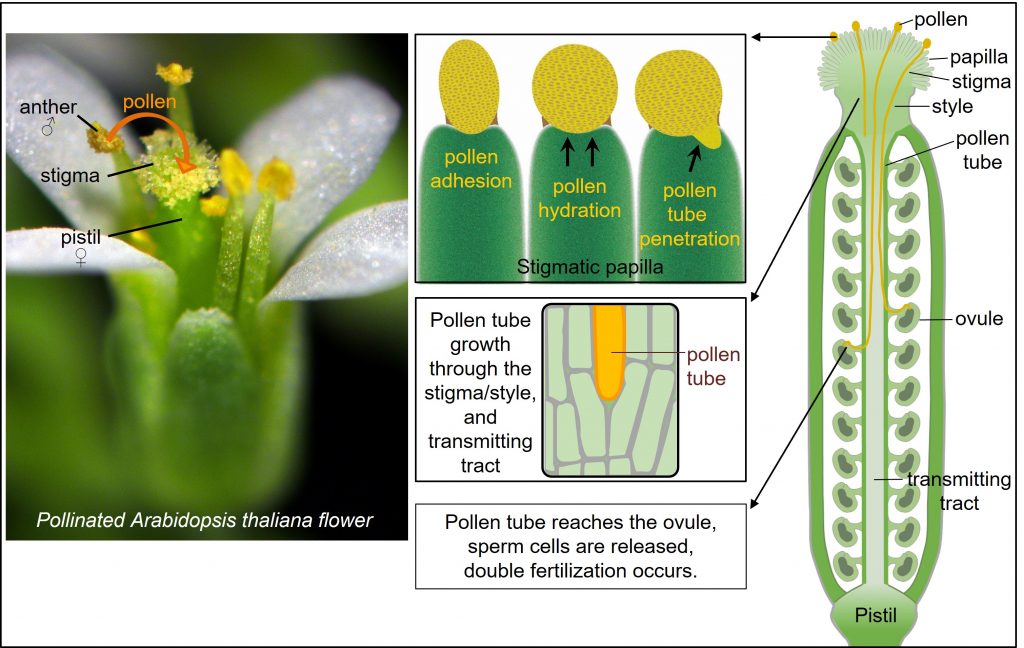Signalling pathways and cellular responses regulating pollen-pistil interactions in the Brassicaceae family
In flowering plants, the process of fertilization begins with pollen landing on the stigma at top of the pistil. This is followed by pollen hydration, germination and pollen tube growth down the pistil to fertilize the ovule. Our research is focused on the members of the Brassicaceae family (Arabidopsis thaliana and closely related species) where complex cell-cell communication events takes place in the stigma to identify and accept compatible pollen while rejecting self-incompatible pollen and ignoring foreign pollen. Our research directions investigate the signalling pathways and cellular responses that regulate compatible and self-incompatible pollen-pistil interactions.

In a search for factors that act early in the compatible pollen responses, we have identified a group of receptor kinases (LRR-VIII-2 subfamily) that function in the stigma and style to support compatible pollen hydration and pollen tube growth. In addition to more fully characterizing these receptor kinases, we are also searching for downstream signalling proteins in this pathway. We have also identified components of an exocyst-linked secretory system being required in the stigma to promote pollen hydration and pollen tube growth, and working to more fully understand the molecular and cellular mechanisms behind these secretory events.
The self-incompatibility system is a self-pollen rejection system designed to prevent self-fertilization and inbreeding. In this system, the SP11/SCR ligand from the self-incompatible pollen binds to a stigma-specific S Receptor Kinase (SRK) which then activates a signalling pathway in the stigmatic papilla for pollen rejection. In searching for components in this signalling pathway, my research group identified the ARC1 E3 ubiquitin ligase as acting downstream of SRK. ARC1 has been proposed to target compatibility factors for ubiquitination and degradation of the 26S proteasome, and several factors have now been discovered, including a component of the secretory pathway required for the basal compatible pollen response pathway. Additionally, we have discovered that autophagy is rapid activated in the stigmatic papillae with self-incompatible pollinations in Arabidopsis species. We are currently exploring in more detail how autophagy is involved in the self-incompatibility pathway.